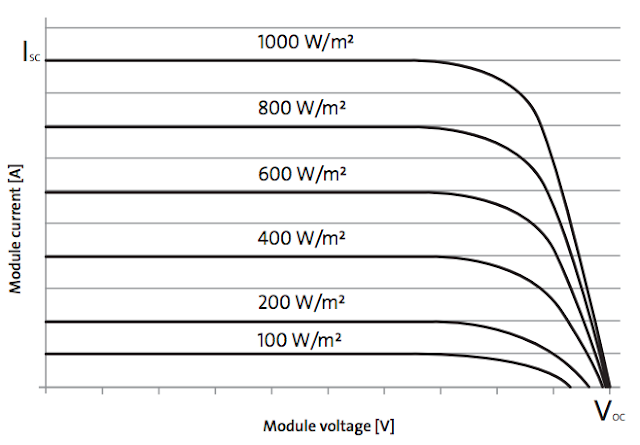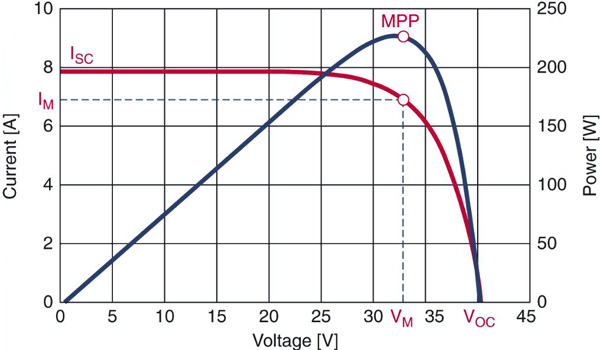Source: Why a Typical Home Solar Setup Does Not Work With the Grid Down – And What You Can Do About It | Syonyk’s Project, by Russell Graves
The biggest problem is that they’re very easy to drive into voltage collapse (and therefore power collapse) if you draw beyond the peak power they can produce at the current temperature and illumination. This is an example IV (current/voltage) curve out of the datasheet from my panels – it’s one I had laying around. The numbers don’t matter, because all solar panels work this way – just with different numbers on the scales.

…
The peak power (maximum power point) on the panel comes slightly past the start of the drop in voltage, and the available power drops very rapidly as you go past that point into the voltage collapse. At both the short circuit point (0V, plenty of amps) and the open circuit voltage (0 amps, plenty of volts), the panels are producing zero usable power. …

You need batteries in an off grid system for two reasons: Energy storage is the obvious reason, but they also cover peak power demands. … Worth noting on batteries: They suffer age related degradation as well as as cycle based degradation. You cannot keep any battery alive forever, even if you don’t use it. … Let me offer a general guideline on batteries: Any time you put any sort of battery into a power system, the system will never “pay for itself.” There may be specialty cases where this isn’t true, but it’s a solid first order approximation you should be aware of.
Why have I written all this? To explain (hopefully) that the reason most solar power systems won’t work off grid has literally nothing to do with power companies being evil and demanding that you buy their power. It has everything to do with the system not being designed to run off grid. Why are they designed that way? Because it’s cheaper. Period. A microinverter based system is substantially cheaper than anything with batteries (which will need regular replacement), and that’s what people get installed when they want a reasonably priced bit of rooftop solar to save money on their power bill.


